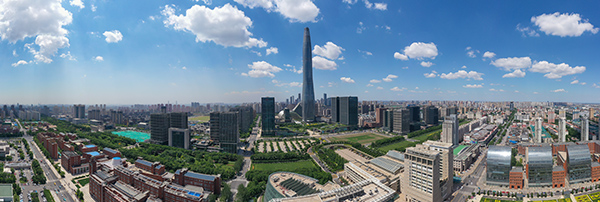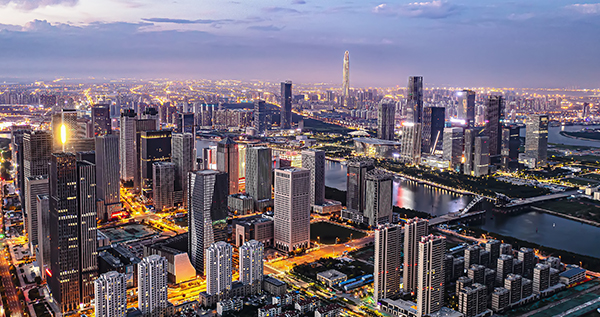The Tianjin Economic-Technological Development Area (TEDA)
Updated : 2023-06-15
Print Print
The Tianjin Economic-Technological Development Area (TEDA) is one of the first national-level development zones approved by the State Council in 1984. It has ranked first in the comprehensive rankings of Chinese development zones for 16 consecutive years. The TEDA has a planned area of 403 square kilometers and aims to become a center for advanced manufacturing research and development and the core area of the beautiful "Bincheng" (Binhai New Area) in Tianjin during the "14th Five-Year Plan" period.
The TEDA is the first financial demonstration zone in the northern region of China's pilot free trade zone. It is a national demonstration base for the new industrialization of four major industries: electronic information, automobiles, petrochemicals, and biomedicine. It is also one of the first national-level demonstration bases for innovation and entrepreneurship approved by the State Council. The TEDA has been designated as one of the first pilot cities (districts) for the integrated development of industries and finance, one of the first pilot regions for the integration of the two industries designated by the state, the national base for digital service exports, one of the first three national-level ecological industrial parks recognized by three ministries of the state, the first national-level pilot park for the circular economy, and is a national base for the innovation and entrepreneurship of overseas high-level talents.

Currently, the TEDA has developed three industrial clusters in the automotive and high-end equipment, new generation information technology, and chemical new materials industries, each with a combined output value exceeding 100 billion. Moreover, the TEDA is home to an industrial cluster in the pharmaceutical and healthcare industry valued at 50 billion. It hosts a modern service industry cluster that thrives on fully licensed financial services and a multi-format platform economy.
The TEDA has consistently played a leading and pioneering role in the development and opening-up of Binhai New Area. In 2022, the TEDA's industrial output value reached 525.56 billion yuan, and the revenue from for-profit services reached 62 billion yuan. The actual utilization of foreign capital amounted to 1.8 billion US dollars, with a growth rate of 22.5%, while the actual utilization of domestic capital reached 56.4 billion yuan, with a growth rate of 40%. The TEDA achieved a total fixed asset investment of 48.92 billion yuan, with industrial investment accounting for 76.4% at 37.4 billion yuan, with the value added by strategic emerging industries accounting for 43.6%. Retail sales of consumer goods experienced a year-on-year increase of 1.6%. By the end of 2022, the TEDA had attracted a total of 6,416 foreign-funded projects from 97 countries and regions, with actual foreign investment amounting to 68.28 billion US dollars. Among them, 532 projects were invested in by 117 Fortune 500 multinational companies. The cumulative number of registered domestic enterprises reached 62,600, with a registered capital of 2.3 trillion yuan.
The TEDA is one of the comprehensive tourism demonstration areas in Tianjin, seamlessly integrating the region’s tourism resources along both sides of the Haihe River in the Yujiapu and Xiangluo bay areas. It features popular attractions such as the InterContinental Tianjin Yujiapu Hotel, Tianjin Juilliard School, Polar Ocean Park, Haihe River cruises, the night light show on both sides of the Haihe River, Rainbow Wetland Park, and Tanggu South Station. These attractions cover the cultural tourism area of the Haihe River Cultural Belt, heritage sites, and the science and technology wetland area. The TEDA is also home to iconic landmarks and selfie spots, including the Tianjin Chow Tai Fook Financial Center, Binhai Cultural Center, and Binhai High-Speed Rail Station. Furthermore, it offers over ten industrial tourism destinations, such as the Otis Elevator TEDA Base, Master Kong Dream Exploration Park, and the Sino-Singapore TCM Industrial Park.